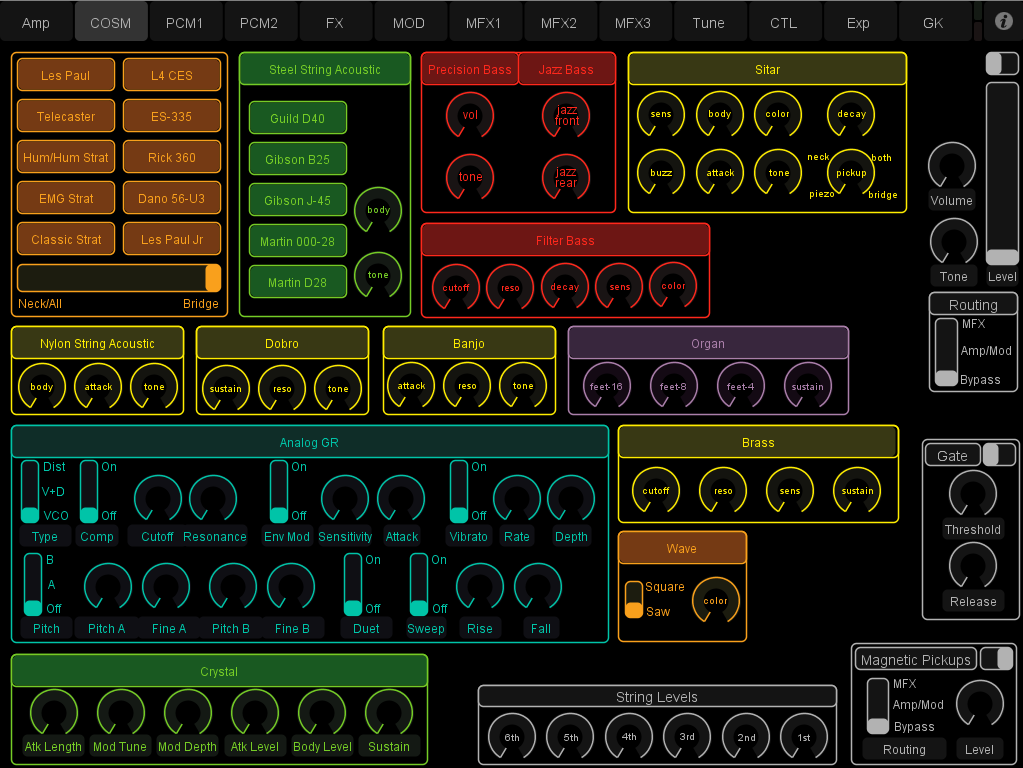

It can be altered, but should match the labels set on the touchOSC screen. SList is a list of synths corresponding to the labels on the TouchOSC interface. It MUST have at least one value in it, but can have up to 16 if you wish (The tenth entry will normally be ignored (if you have that many!) It can be set manually or it can be altered by the TouchOSC interface. SynthRing holds a ring of synth names which are indexed by channel to allocate to the playing channels. These build up from the centre, with channel 10 also being set to the centre. Pan is a list of the default pan settings I set for each channel. Use_transpose may be useful if you want to shift your sound up or down by adjusting the number of semitiones from 0. If you use different samples you will have to alter this hash list.
#Touchosc editor download
I will make a set of samples available for download at the end of the article.ĭrums is a hash table which relates the midi note value to the name of the corresponding sample. Percpath sets the path to the folder containing the percussion samples. The port in the TouchOSC device will be 4559 for Sonic Pi 3.0.1 or 3. You also have to set the ip address of your Sonic Pi computer and the SP listening port in the TouchOSC program on the tablet or phone you are using. The use_osc line sets the ip address of the associated TouchOSC tablet or phone, and the port on which it is listening. I usually leave these both commented out. In the other direction, particularly if you are running a demanding file on a Raspberry Pi you may want to increase the normal schedule ahead time.


Normally you use the program without use_real_time, but for modest files you can enable this if you really need minimum latency between the source and what you hear. This may give rise to a rather mushy mixture of overlapping notes, or, a stream of notes with large gaps between them depending on the release time specified. The kludgy way to deal with an incoming file on Sonic Pi has therefore been to start every note with a predetermined fade out (:release) time specified, appropriate to the tempo of the music being played. Although it is easy to see and interact with midi signals which appear in the cues log, the design of Sonic Pi which uses synths where you specify the pitch AND duration of a note as it starts, is fundamentally different to the way that a stream of midi signals works by specifying that a note is to start playing at a certain pitch, but not specifying the duration of the note, instead sending a further signal at any arbitrary later time to specify that the note playing should stop.

However one area, which at first sight seemed not to be achievable was to be able to “play” incoming midi files. These greatly increased the scope of musical activities that Sonic Pi could be involved in, whether by enable it to interact with external synths and keyboards, or to be controlled by programs such as TouchOSC or to interact with external sensors and devices such as touch inputs, light displays or even mechanical solenoids as in the case of my Sonic Pi driven Xylophone.
#Touchosc editor windows
The two major additions to Sonic Pi with the advent of versions 3.0.1 for the Pi and 3.1 for Mac, and Windows (with the option of self build for other platforms was the addition of interfaces to handle external midi and OSC calls. I never cease to be amazed at the versatility of Sonic Pi to produce music in such a variety of ways.


 0 kommentar(er)
0 kommentar(er)
